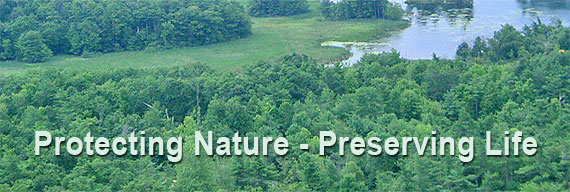Chapter 7
The Big Trees
Part 2
The bark of the largest trees is from one to
two feet thick, rich
cinnamon brown, purplish on young trees, forming magnificent masses
of color with the underbrush. Toward the end of winter the trees are
in bloom, while the snow is still eight or ten feet deep. The female
flowers are about three-eighths of an inch long, pale green, and grow
in countless thousands on the ends of sprays. The male are still more
abundant, pale yellow, a fourth of an inch long and when the pollen is
ripe they color the whole tree and dust the air and the ground. The
cones are bright grass-green in color, about two and a half inches
long,
one and a half wide, made up of thirty or forty strong, closely-packed,
rhomboidal scales, with four to eight seeds at the base of each. The
seeds are wonderfully small end light, being only from an eighth to a
fourth of an inch long and wide, including a filmy surrounding wing,
which causes them to glint and waver in falling and enables the wind to
carry them considerable distances. Unless harvested by the squirrels,
the cones discharge their seed and remain on the tree for many years.
In
fruitful seasons the trees are fairly laden. On two small branches one
and a half and two inches in diameter I counted 480 cones. No other
California conifer produces nearly so many seeds, except, perhaps, the
other sequoia, the Redwood of the Coast Mountains. Millions are ripened
annually by a single tree, and in a fruitful year the product of one of
the northern groves would be enough to plant all the mountain ranges in
the world.
As soon as any accident happens to the
crown, such as being smashed off
by lightning, the branches beneath the wound, no matter how situated,
seem to be excited, like a colony of bees that have lost their queen,
and become anxious to repair the damage. Limbs that have grown outward
for centuries at right angles to the trunk begin to turn upward to
assist in making a new crown, each speedily assuming the special form
of
true summits. Even in the case of mere stumps, burned half through,
some
mere ornamental tuft will try to go aloft and do its best as a leader
in forming a new head. Groups of two or three are often found standing
close together, the seeds from which they sprang having probably grown
on ground cleared for their reception by the fall of a large tree of a
former generation. They are called "loving couples," "three graces,"
etc. When these trees are young they are seen to stand twenty or thirty
feet apart, by the time they are full-grown their trunks will touch and
crowd against each other and in some cases even appear as one.
It is generally believed that the sequoia
was once far more widely
distributed over the Sierra; but after long and careful study I have
come to the conclusion that it never was, at least since the close of
the glacial period, because a diligent search along the margins of the
groves, and in the gaps between fails to reveal a single trace of its
previous existence beyond its present bounds. Notwithstanding, I feel
confident that if every sequoia in the Range were to die today,
numerous
monuments of their existence would remain, of so imperishable a nature
as to be available for the student more than ten thousand years hence.
In the first place, no species of coniferous
tree in the Range keeps
its members so well together as the sequoia; a mile is, perhaps, the
greatest distance of any straggler from the main body, and all of those
stragglers that have come under my observation are young, instead of
old
monumental trees, relics of a more extended growth.
|













